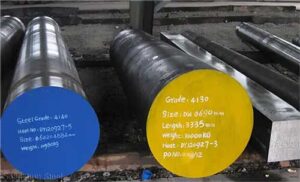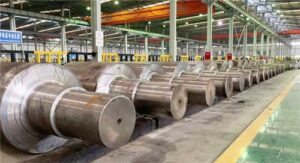In the world of industrial materials, the choice between hot work tool steel and high-speed steel can be a critical decision that profoundly impacts the performance and efficiency of various manufacturing processes. These two classes of steel have distinct properties and are designed for specific applications. In this comprehensive article, we will delve into the characteristics, applications, advantages, and limitations of both hot work tool steel and high-speed steel, helping you determine which is the superior choice for your specific needs.
1. Introduction
Steel is the backbone of modern manufacturing, and choosing the right type of steel for a specific application is crucial for success. Hot work tool steel and high-speed steel are two prominent materials in the industrial world, each with its unique attributes and purposes.
2. Hot Work Tool Steel: Properties and Applications
Composition and Alloying Elements
Hot work tool steel is engineered with alloying elements like chromium, tungsten, molybdenum, and vanadium. These elements enhance heat resistance, wear resistance, and toughness.
Heat Resistance and Toughness
Hot work tool steel is known for its exceptional heat resistance, making it suitable for applications involving high temperatures, such as forging and die casting. It maintains toughness even under extreme conditions.
Common Applications
Hot work tool steel finds its niche in industries like die casting, forging, and extrusion, where heat resistance, wear resistance, and dimensional stability are essential.
3. High-Speed Steel: Characteristics and Uses
Alloy Composition
High-speed steel is primarily composed of tungsten, molybdenum, chromium, and vanadium. These alloys contribute to its exceptional hardness, wear resistance, and high-temperature performance.
Cutting Performance and Versatility
High-speed steel is renowned for its cutting performance in applications like machining and drilling. It can operate at high speeds and maintain its sharpness, making it versatile for various cutting tasks.
Typical Applications
High-speed steel is commonly used for cutting tools, such as drills, taps, and end mills. It is also employed in applications where high-temperature resistance is required, such as in aerospace components.
4. Comparing Hot Work Tool Steel and High-Speed Steel

Temperature Range and Heat Resistance
Hot work tool steel excels in high-temperature applications, withstanding temperatures well beyond 600°C (1112°F). High-speed steel can handle elevated temperatures but operates at a slightly lower range.
Strength and Toughness
Hot work tool steel maintains its toughness even at high temperatures, making it suitable for applications like forging. High-speed steel, while hard, may not possess the same level of toughness at extreme temperatures.
Wear Resistance and Cutting Performance
High-speed steel offers exceptional wear resistance and cutting performance, making it ideal for machining and drilling. Hot work tool steel may not provide the same level of performance in these applications.
Cost and Machinability
Hot work tool steel is generally more cost-effective than high-speed steel. However, high-speed steel’s superior cutting performance may offset its higher initial cost. Machinability varies depending on the specific alloy and application.
5. Advantages of Hot Work Tool Steel
When to Choose Hot Work Tool Steel
Hot work tool steel is the superior choice when high-temperature resistance and toughness are paramount. It excels in die casting, forging, and extrusion applications, where heat and wear resistance are critical.
6. Advantages of High-Speed Steel
When to Opt for High-Speed Steel
High-speed steel is the preferred option when cutting performance and versatility are essential. It shines in machining, drilling, and cutting tool applications, where maintaining sharpness at high speeds is crucial.
7. Challenges and Limitations
Recognizing the Constraints of Each Material
Hot work tool steel may struggle to match the cutting performance of high-speed steel in machining applications. On the other hand, high-speed steel may not provide the same level of heat resistance required for hot forming processes.
8. FAQs
Frequently Asked Questions About Hot Work Tool Steel and High-Speed Steel
Q1. Can hot work tool steel be used for cutting tool applications?
While hot work tool steel is not typically used for cutting tools, some specialized grades may be suitable for certain cutting tasks. However, high-speed steel is the preferred choice for cutting applications due to its superior cutting performance.
Q2. Is high-speed steel suitable for high-temperature applications like die casting or forging?
High-speed steel can handle elevated temperatures, but it may not offer the same level of heat resistance as hot work tool steel. It is better suited for applications where cutting performance and sharpness retention are crucial.
Q3. Are there hybrid materials that combine the advantages of both hot work tool steel and high-speed steel?
Some steel alloys attempt to combine the properties of both hot work tool steel and high-speed steel to provide a balance between heat resistance and cutting performance. These alloys are used in specialized applications.
Q4. Does the choice between hot work tool steel and high-speed steel impact machining costs?
The choice of material can impact machining costs. While hot work tool steel may be more cost-effective initially, high-speed steel’s superior cutting performance can lead to reduced machining time and costs in certain applications.

